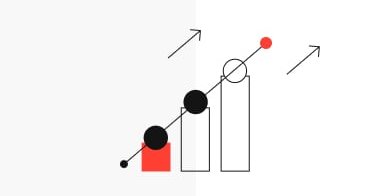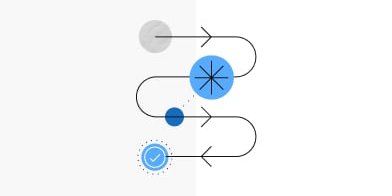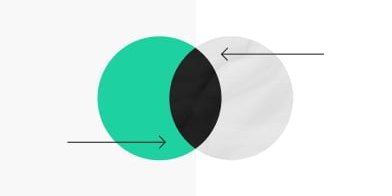Companies do well to look at their products from a customer-centric perspective. We illustrate how good usability can become a decisive market advantage ...
All products having an impact on the market nowadays have at least one characteristic in common: good usability. Successful companies have not only thought from the perspective of the provider for a long time, but above all from that of the user. Customers are not interested in technical feasibility and its hurdles. They demand products that are easy to use and easy to learn.This applies equally to physical and virtual products.
But is there a general basis on which the usability of websites and apps is built today? Yes and no, because some interactive elements such as checkboxes or login forms are now generally considered to be set. User behavior, on the other hand, is subject to constant change – the worldwide spread of smartphones e.g. has ensured that nowadays there is significantly more scrolling, while users previously clicked more.
In order to develop innovative products, it is therefore always advisable for companies to combine standards and dynamic developments. But how do you keep pace and don't run the risk of missing important changes in the context of usability?
For managers of digital products, managing directors who want to digitize their company, product owners and all those who have read our article "What is UX Design" and would like to dive deeper into the subject.
In this article we answer the following questions:
- What does usability mean?
- Why is usability important?
- What is the difference between usability and usefulness?
- What are the connections and differences between usability and user experience?
- How can usability be optimized?
- What is a usability test?
- How can you measure usability?
- Where else can you stand out from the market?
- How do companies benefit from good usability?
What does usability mean?
The term “usability” includes learnability and efficiency, but also accessibility.
All three criteria describe requirements that a good product (website or app) must have when using it. In other words: is something easy to learn, is it easily accessible, and is it easy to use?
Why is usability important?
Optimized usability is an essential aspect of the product promise, because in order to differentiate yourself from competitors in the market, ease of use is now essential.
Example 1: In a user survey in the fashion sector in 2017, more than half of the respondents (55%) stated that the aspect of user-friendliness / usability decides whether they visit a website again, 33% stated that the quality of usability decides whether or how many products they buy.
Example 2: In the study “Simplicity – The world's simplest Brands 2018-2019” it becomes clear that the brands with the “simplest” usability are also the most successful.
Example 3: The German supermarket chain Rewe has specially installed an in-house UX team in its “Rewe Digital” segment, as it is of decisive importance for its business success that the subject of usability is taken into account in all entrepreneurial steps.
What is the difference between usability and usefulness?
In order to be successful in the market, or to exist at all, a product must offer its users clear added value. This added value is largely defined by how useful a product is.
Usefulness describes the offer of a product itself. Is it something that will help the user? Does the user even need it? Can it be integrated into the everyday life of the user in this form?
If the product range meets the requirements of the user, a lot has already been done right. Nevertheless, there is a possibility that the product cannot be used adequately. This can be due to improper implementation or a poor user experience during use. In this case, the usability should be improved. Good usability is essential for the success of a product in the long term.
What are the connections and differences between usability and user experience?
This can best be illustrated with a practical example.
Let's assume you are visiting someone else's office and want to make a cappuccino in their coffee kitchen, but you don't know the coffee at all.
Expectation (before using):
- You want a cappuccino with super milk foam
- You have never frothed milk by hand before, have an automatic milk frother at home
- You are afraid of doing something wrong or breaking it
Experience (during use):
- All operating elements of the machine are clearly marked and easily accessible
- Tips for frothing the milk, such as the ideal amount of milk, the perfect angle of the glass, etc., appear on the machine's display
- The arrangement of the controls and the performance of the machine ensure that the milk foam is ready faster than you are used to from your own device
Impression (after use):
- You conjured up a perfect drink
- You have lost the fear of the “frothing milk” process
- You rate the product positively – you are grateful to the machine / brand for the support
- You are considering purchasing the machine for yourself as well
- You have a generally positive brand experience
- The likelihood of recommendation / word-of-mouth is high
In our example, usability describes the period in which the actual usability of the product is at issue. In terms of time, usability is preceded by a need for problem solving or a phase of general expectation – a user need. The combination of a fulfilled user need and a usable solution results in a product that is "useful". This experience is then reflected in general satisfaction with the product and trust in or long-term loyalty to the brand.
The user experience encompasses the entire process: before, during and after use.
If there is no user need that can be met, optimal usability does not help. A perfectly usable product that nobody needs will not meet with approval on the market.
The situation is similar when a product idea satisfies user needs, but the product itself cannot be used.
Neither one nor the other make a useful product and are therefore doomed to fail.
How can usability be optimized?
When customers first encounter the user interface of a website or app, they should be able to find their way around easily enough to achieve their goals without having to rely on outside or expert knowledge.
A design with exemplary usability guides customers through the simplest and least labor-intensive route. Optimal usability should therefore contain the following UX design criteria:
1) Accessibility: Is the design comprehensible for all customers? (e.g. also for people with color blindness or similar)
2) Learnability: Does it lead to an immediate understanding of the user interface?
3) Efficiency: Once the customer has understood the UX design - how quickly can one complete the required steps?
4) Satisfaction: How pleasant is it to use?
5) Memorability: How quickly do customers find their way back to usability after a long period of non-use?
6) Error tolerance: How error-prone is the use of the product and how easily can the customer correct his errors?
7) Feasibility: Does the operation lead to a good user experience in the used technology? Is the performance optimal on all devices?
At Boana, we also divide the implementation of digital products into further categories – based on terminology used in German craftsmanship / architecture:
Appropriate to the material: Has the design been tailored to the intended technology? Designs for web applications should be designed differently than native apps. The consideration of the technological framework is often a factor that influences usability.
Professional: Particularly important for B2B products: Does it reflect the widely accepted solutions in an industry?
Media-friendly: Key point responsive design and different screen sizes, as well as the avoidance of media breaks.
If you are interested in having your product subjected to a usability test, it is best to book us for an expert evaluation or to start with a UX audit.
What is a usability test?
As already indicated in the coffee machine example above, it is imperative to have a deep understanding of the user context in order to be able to offer a product with optimal usability.
Such usage scenarios are therefore also examined for virtual products in a wide variety of user tests before they come onto the market as apps or websites.
Examples of methods from the usability test environment are, e.g.:
- User performance tests, that measure how long it takes a user to complete a task.
- User interviews, in which the subjective feelings of the test persons are queried and their behavior is observed.
- Eye tracking studies, in which eye movements are recorded during use and thus subconscious actions are queried.
- Heat maps, that illustrate click behavior and navigation paths.
- Prototype testing, in which knowledge is gained through A / B tests.
- Accessibility tests, that determine whether a product is easily accessible.
![]() Test scenario of a user interview including eye tracking for one of our customers.
Test scenario of a user interview including eye tracking for one of our customers.
In general, the intensity of the testing depends on the degree of innovation of the product. For example, if a “desk research” already exists and a large number of insights are already known, a heuristic approach will be chosen instead of extensive testing and will be designed with the knowledge of experts.
How can you measure usability?
Two approaches have proven to be useful to measure usability. On the one hand it is about checking how the users do something and on the other hand it is important to analyze how they talk about it.
UX KPIs in terms of behavior
- The number of correctly executed tasks (Task Success Rate)
- The time required to successfully complete a task (Time on Task)
- The objective: does the user manage to reach his destination via navigation or does he need the search function? (Search vs. Navigation)
- The User Error Rate: How often do incorrect actions happen?
UX KPIs in terms of opinions:
- Surveying users by using a 10-point usability questionnaire (System Usability Scale)
- The measurement of customer satisfaction by the Net Promoter Score (NPS), which is collected based on the answer to the question: "How likely is it that you will recommend the brand, website, service etc. to a friend or colleague?"
- The customer satisfaction, which also only asks one single question: “How satisfied are you with the website, the product, service, etc.?”
Where else can you stand out from the market?
Big brands have been relying on good usability and good UX design for years. A common example is always Apple, but Google also continuously optimizes its homepage – mostly unnoticed by users.
The big players are often able to define design conventions that the rest of the market participants must use as a guide. Since the market leaders set an example for a large number of users, such as how a search engine has to look and function, it is mostly difficult or impossible for SMEs to break with these conventions. Innovations in the usability area are often limited because the prevailing user habits have already been defined by the big brands.
That said, there is still plenty of room to stand out from the competition. This can be seen, for example, in the constant further development of checkout or account creation processes. Since changes to entire processes as well as to the smallest interaction affect usability, their optimization is a continuous process.
A large part of this is also the constant further development of technologies, the implementation of which can have a very decisive influence on usability. The now common identification by video facilitates and accelerates processes immensely – a clear usability advantage.
But one thing is clear: whether SMEs or world market leaders – customers today simply expect good usability and it is a never-ending commitment to constant improvement. Optimal usability always means good UX design. That is, simplicity, comprehensibility, memorability and recognizability – also in terms of the brand.
Although no customer will choose a product simply because of good usability, poor usability can definitely lead to rejection.
How do companies benefit from good usability?
At the moment when a company is in competition, it has to offer the best usability in order to be noticed. In highly saturated markets, user-friendliness thus makes a decisive contribution to differentiation and positioning.
The simplicity of usability increases the likelihood of making a purchase decision, which in turn benefits sales (conversion optimization), leads to better ratings on the internet (see Net Promoter Score) and thus generates new customers.




